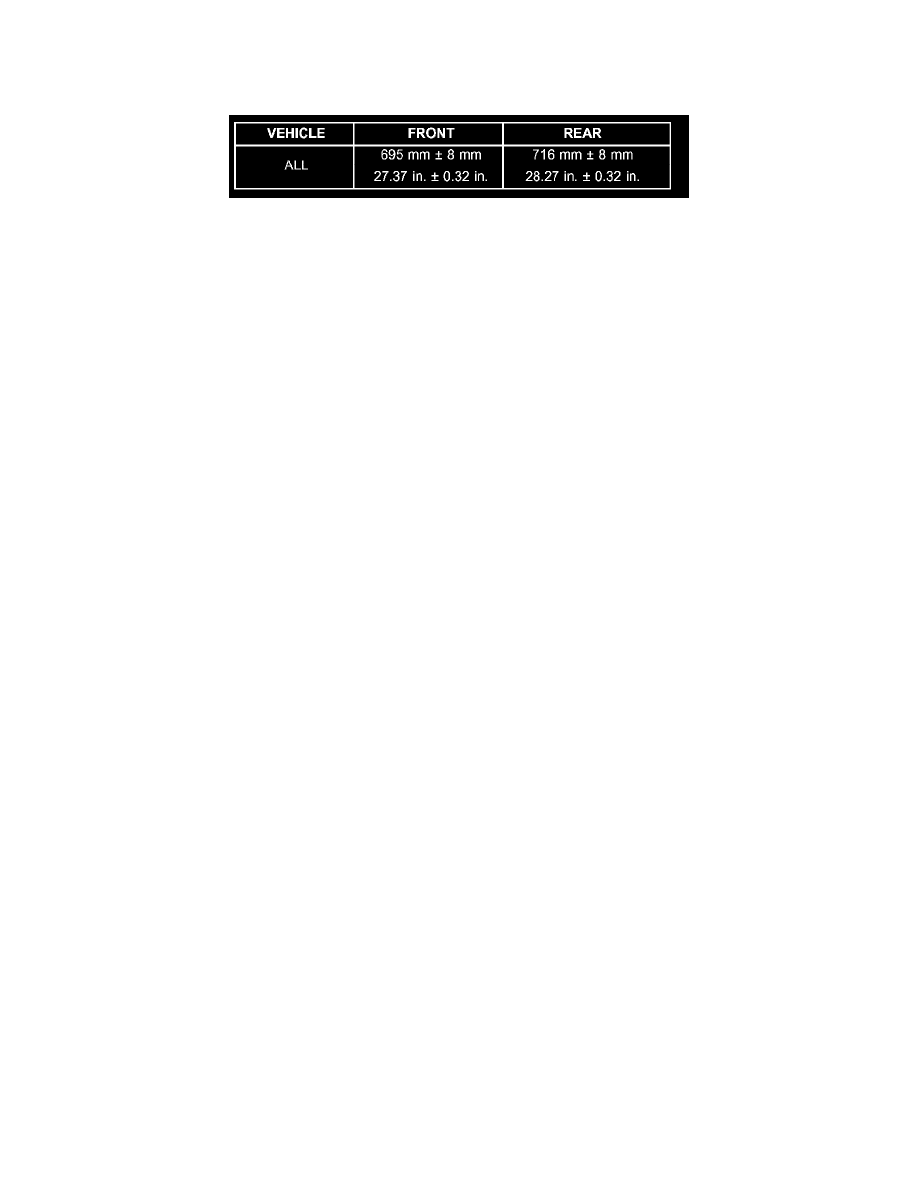PT Cruiser L4-2.4L Turbo VIN G (2004)

Alignment: Service and Repair
Curb Height Measurement
STANDARD PROCEDURE - CURB HEIGHT MEASUREMENT
CURB HEIGHT SPECIFICATIONS
The wheel alignment is to be checked and all alignment adjustments made with the vehicle at its required curb height specification.
Vehicle height is to be checked with the vehicle on a flat, level surface, preferably a vehicle alignment rack. The tires are to be inflated to the
recommended pressure. All tires are to be the same size as standard equipment. Vehicle height is checked with the fuel tank full of fuel, and no
passenger or luggage compartment load.
Vehicle height is not adjustable. If the measurement is not within specifications, inspect the vehicle for bent or weak suspension components. Compare
the parts tag on the suspect coil spring(s) to the parts book and the vehicle sales code, checking for a match. Once removed from the vehicle, compare
the coil spring height to a correct new or known good coil spring. The heights should vary if the suspect spring is weak.
NOTE: Prior to reading the curb height measurement, the front an rear of the vehicle should be jounced. Induce jounce by grasping the center of the
rear, then front bumper (or fascia) and jouncing the vehicle an equal number of times. Release the bumper at the bottom of the jounce cycle.
1. Measure from the edge of the wheel opening fender lip directly above the wheel center (spindle) down to the floor or alignment rack surface.
2. When measuring, maximum left-to-right differential is not to exceed 10 mm (0.39 inch).
3. Compare the measurements to specifications listed in the following CURB HEIGHT SPECIFICATIONS chart.
